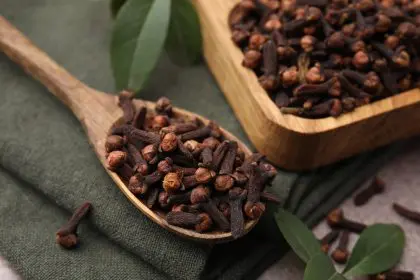Managing high cholesterol doesn’t always require prescription medications. Many people successfully reduce their cholesterol levels through targeted lifestyle changes that address the underlying factors contributing to elevated numbers. These natural approaches work by influencing how your body produces, processes, and eliminates cholesterol.
Your liver manufactures approximately three-quarters of the cholesterol circulating in your bloodstream, while the remaining quarter comes from dietary sources. This means you have significant control over your cholesterol levels through the choices you make each day regarding food, activity, and lifestyle habits.
The most effective natural cholesterol management involves combining multiple strategies rather than relying on a single intervention. When implemented consistently, these approaches can produce meaningful reductions in LDL (bad) cholesterol while supporting overall cardiovascular health.
Understanding which methods work best for your situation helps create a personalized plan that fits your preferences and lifestyle. The following strategies have demonstrated consistent effectiveness in reducing cholesterol levels naturally.
1. Switch to heart-healthy cooking oils
The oils you use for cooking and food preparation directly impact your cholesterol levels. Replacing butter, lard, and other saturated fats with healthier alternatives creates immediate improvements in your cholesterol profile.
Extra virgin olive oil stands out as an exceptional choice for cholesterol management. This monounsaturated fat helps reduce LDL cholesterol while maintaining beneficial HDL levels. Use olive oil for salad dressings, light sautéing, and drizzling over vegetables.
Avocado oil provides similar benefits with a higher smoke point, making it ideal for higher-temperature cooking methods. This versatile oil contains compounds that support healthy cholesterol metabolism while adding mild flavor to dishes.
Canola oil offers another budget-friendly option rich in monounsaturated fats and omega-3 fatty acids. Its neutral taste works well in baking and general cooking applications where you don’t want added flavor.
Avoid partially hydrogenated oils and products containing trans fats, which raise LDL cholesterol while lowering beneficial HDL cholesterol. Read ingredient labels carefully, as these harmful fats still appear in some processed foods despite regulatory restrictions.
2. Fill half your plate with vegetables at every meal
Vegetables provide multiple cholesterol-lowering benefits through their fiber content, plant compounds, and nutrient density. Making vegetables the star of your meals naturally reduces space for cholesterol-raising foods while providing essential nutrients for heart health.
Leafy greens like spinach, kale, and arugula contain compounds that support healthy cholesterol metabolism. These vegetables also provide folate and other B vitamins that help process homocysteine, an amino acid linked to cardiovascular risk when elevated.
Cruciferous vegetables including broccoli, cauliflower, and Brussels sprouts contain sulfur compounds that support liver function and cholesterol processing. Steam, roast, or stir-fry these vegetables to preserve their beneficial compounds.
Colorful vegetables like bell peppers, carrots, and tomatoes provide antioxidants that protect against cholesterol oxidation, a process that makes LDL cholesterol more harmful to artery walls. Aim for a rainbow of colors to maximize antioxidant intake.
Root vegetables such as sweet potatoes and beets offer soluble fiber that binds to cholesterol in the digestive system, preventing absorption. These naturally sweet vegetables can satisfy cravings while supporting cholesterol management.
3. Start every day with oatmeal or oat-based foods
Oats contain beta-glucan, a special type of soluble fiber that forms a gel-like substance in your digestive system. This gel binds to cholesterol and bile acids, carrying them out of your body before they can be absorbed into your bloodstream.
Steel-cut oats provide the most beta-glucan per serving, though rolled oats and quick oats also offer significant benefits. Prepare oatmeal with water or plant-based milk, then add fresh fruit, nuts, or seeds for additional nutrition and flavor.
Oat bran contains concentrated amounts of beta-glucan and can be mixed into smoothies, yogurt, or baked goods. Two tablespoons of oat bran daily provides meaningful cholesterol-lowering effects.
Overnight oats offer a convenient way to incorporate oats into busy mornings. Combine oats with liquid and your favorite additions the night before, then grab and go in the morning.
Look for other oat-based products like oat bread or oat cereals, but check labels to ensure they don’t contain excessive added sugars or unhealthy fats that could counteract the cholesterol-lowering benefits.
4. Include beans and legumes in meals regularly
Beans, lentils, chickpeas, and other legumes rank among the most effective cholesterol-lowering foods available. These plant proteins provide substantial amounts of soluble fiber while offering sustainable energy and satisfying texture to meals.
Black beans contain anthocyanins, the same compounds that give blueberries their color, along with impressive amounts of soluble fiber. Add black beans to salads, soups, or grain bowls for a cholesterol-lowering protein boost.
Lentils cook quickly and absorb flavors well, making them perfect for busy weeknight dinners. Red lentils break down during cooking to create creamy textures in soups and stews, while green and brown lentils hold their shape in salads and side dishes.
Chickpeas provide versatility and can be roasted for snacks, blended into hummus, or added to curries and salads. Canned chickpeas offer convenience, though dried varieties provide more flavor and texture when you have time to cook them from scratch.
Lima beans, kidney beans, and navy beans all provide excellent cholesterol-lowering benefits. Experiment with different varieties to find your preferences, and aim to include legumes in your diet at least three times per week.
5. Snack on nuts instead of processed foods
Nuts provide healthy fats, protein, and fiber that work together to improve cholesterol profiles. The combination of monounsaturated fats, plant sterols, and soluble fiber in nuts creates multiple cholesterol-lowering mechanisms in a convenient, portable package.
Almonds have demonstrated particularly impressive cholesterol-lowering effects in research. A small handful of almonds daily can reduce LDL cholesterol while providing vitamin E and magnesium for heart health.
Walnuts contain alpha-linolenic acid, a plant-based omega-3 fatty acid that supports cardiovascular health. These distinctive nuts also provide compounds that help reduce inflammation in blood vessels.
Pistachios offer visual feedback about portion sizes since you can see the shells accumulate as you eat. This natural portion control helps prevent overconsumption while still providing cholesterol-lowering benefits.
Choose raw or dry-roasted nuts without added oils, salt, or sugar. While nuts provide healthy fats, they’re also calorie-dense, so stick to appropriate portions of about one ounce or a small palmful daily.
6. Walk briskly for 30 minutes most days
Regular physical activity improves cholesterol levels through multiple pathways. Exercise increases the enzymes that move LDL cholesterol from blood to liver for disposal while boosting production of beneficial HDL cholesterol.
Brisk walking provides an accessible form of exercise that most people can incorporate into their daily routines. Walk at a pace that allows conversation but feels purposeful, aiming for about 3-4 miles per hour.
Morning walks can energize your day while establishing a consistent routine. Evening walks help decompress from daily stress while contributing to better sleep quality, both of which support healthy cholesterol levels.
Break longer walks into shorter segments if needed. Three 10-minute walks provide similar cholesterol benefits to one 30-minute session, making it easier to fit activity into busy schedules.
Add variety by exploring different routes, walking with friends or family, or listening to podcasts or audiobooks. Finding enjoyable aspects of walking increases the likelihood of maintaining this healthy habit long-term.
7. Choose whole grains over refined options
Whole grains contain the bran, germ, and endosperm that provide fiber, nutrients, and compounds that support healthy cholesterol levels. Refined grains have these beneficial components removed, leaving mostly starch that can actually worsen cholesterol profiles when consumed in large amounts.
Brown rice provides more fiber and nutrients than white rice while offering similar versatility in meals. The nutty flavor and chewier texture of brown rice pairs well with vegetables, beans, and lean proteins.
Quinoa technically isn’t a grain but provides similar nutritional benefits with complete protein. This versatile seed can be used in salads, as a side dish, or as a base for grain bowls.
Whole wheat bread and pasta offer more fiber than refined versions, but read labels carefully to ensure you’re getting truly whole grain products. The first ingredient should be whole wheat flour, not enriched wheat flour.
Barley contains particularly high amounts of beta-glucan, the same cholesterol-lowering fiber found in oats. Add pearled barley to soups and stews, or use it as a rice substitute in various dishes.
8. Drink green tea throughout the day
Green tea contains catechins, powerful antioxidants that help reduce cholesterol absorption and support healthy cholesterol metabolism. These compounds also provide anti-inflammatory effects that benefit overall cardiovascular health.
Brew green tea fresh rather than relying on bottled versions that may contain added sugars. Steep tea bags or loose leaves for 3-5 minutes to extract maximum beneficial compounds without creating excessive bitterness.
Matcha powder provides concentrated green tea benefits since you consume the entire leaf rather than just the brewed liquid. Add matcha to smoothies, yogurt, or baked goods for a cholesterol-lowering boost.
Replace sugary beverages with green tea to reduce calorie intake while adding cholesterol-lowering compounds to your diet. Cold-brewed green tea offers a refreshing alternative during warmer weather.
Aim for 2-3 cups of green tea daily to maximize cholesterol-lowering benefits. Spread consumption throughout the day rather than drinking large amounts at once to maintain steady levels of beneficial compounds.
9. Get quality sleep every night
Poor sleep disrupts hormones that regulate cholesterol metabolism, leading to increased production of LDL cholesterol and reduced levels of beneficial HDL cholesterol. Prioritizing sleep quality supports your body’s natural cholesterol management processes.
Establish a consistent bedtime routine that signals your body to prepare for sleep. This might include dimming lights, avoiding screens, or practicing relaxation techniques for 30-60 minutes before bed.
Create a sleep-friendly environment by keeping your bedroom cool, dark, and quiet. Consider blackout curtains, white noise machines, or other tools that promote uninterrupted sleep.
Limit caffeine intake after 2 PM, as this stimulant can interfere with sleep quality even if you don’t feel actively alert. Replace afternoon coffee or tea with herbal alternatives or water.
Aim for 7-9 hours of sleep nightly, as both insufficient and excessive sleep can negatively impact cholesterol levels. Pay attention to how you feel with different amounts of sleep to find your optimal range.
10. Manage daily stress with relaxation techniques
Chronic stress elevates cortisol levels, which can increase cholesterol production and interfere with healthy cholesterol metabolism. Learning to manage stress effectively supports natural cholesterol reduction while improving overall well-being.
Deep breathing exercises can be performed anywhere and provide immediate stress relief. Practice slow, deliberate breathing for 5-10 minutes when you notice stress building throughout the day.
Progressive muscle relaxation involves systematically tensing and releasing different muscle groups to promote physical and mental relaxation. This technique helps counteract the physical effects of stress that contribute to cholesterol problems.
Meditation doesn’t require special equipment or extensive time commitments. Start with just 5-10 minutes daily of focused attention on breathing or other meditation objects.
Regular yoga practice combines physical movement with stress reduction, providing multiple benefits for cholesterol management. Many online resources make it easy to practice yoga at home on your schedule.
Creating lasting changes for better cholesterol
Successfully lowering cholesterol naturally requires patience and consistency rather than dramatic overnight changes. Start by implementing one or two strategies that appeal to you most, then gradually add others as these become established habits.
Track your progress through regular cholesterol testing to monitor improvements and maintain motivation. Many pharmacies offer convenient cholesterol screening, making it easy to check your numbers without scheduling medical appointments.
Focus on sustainable changes that fit your lifestyle and preferences rather than trying to follow someone else’s perfect plan. The most effective cholesterol-lowering approach is one you can maintain long-term.
Remember that natural cholesterol management often takes several months to show full effects. Stay committed to your chosen strategies while remaining flexible about adjusting your approach based on what works best for your situation and preferences.















